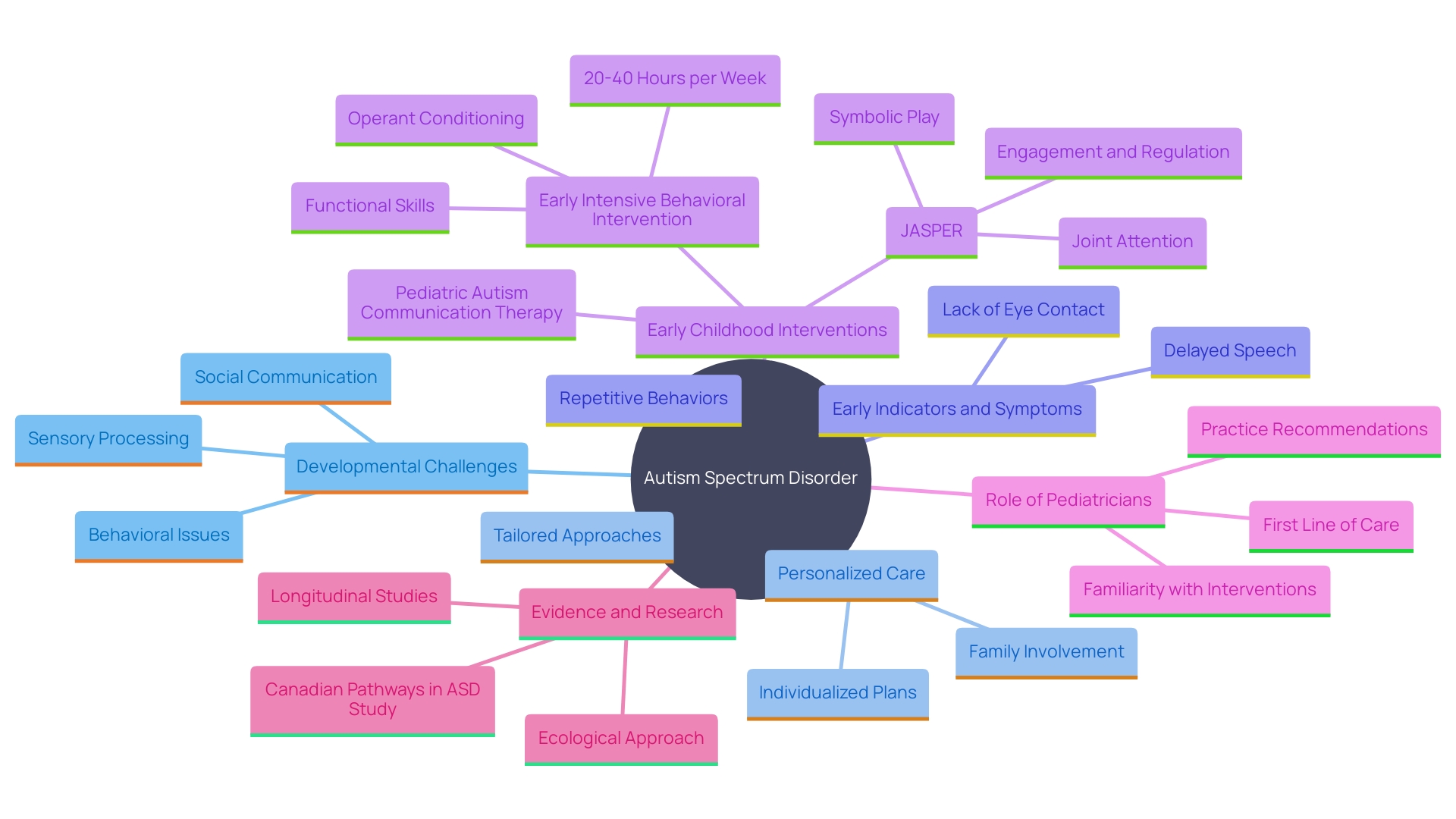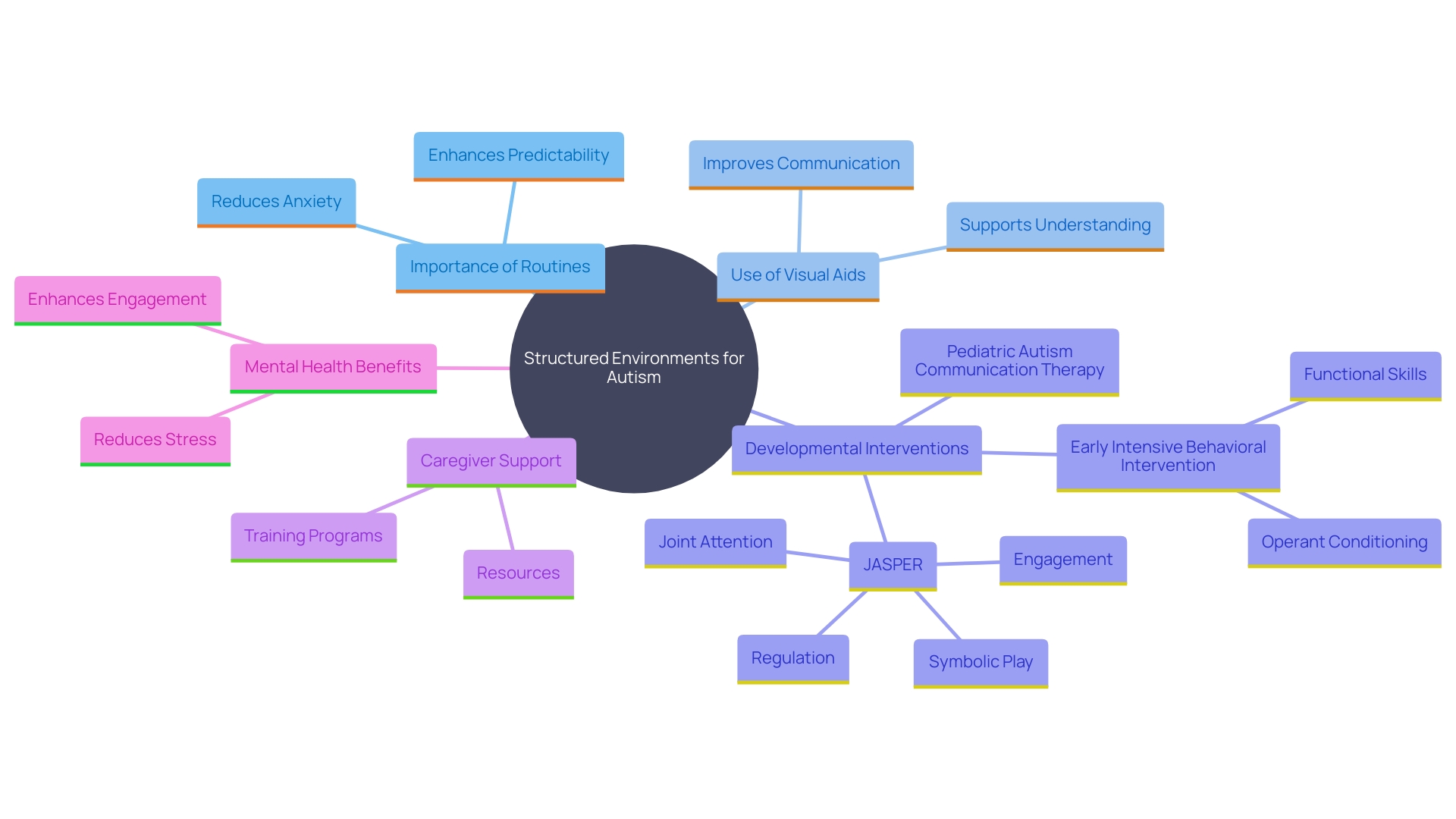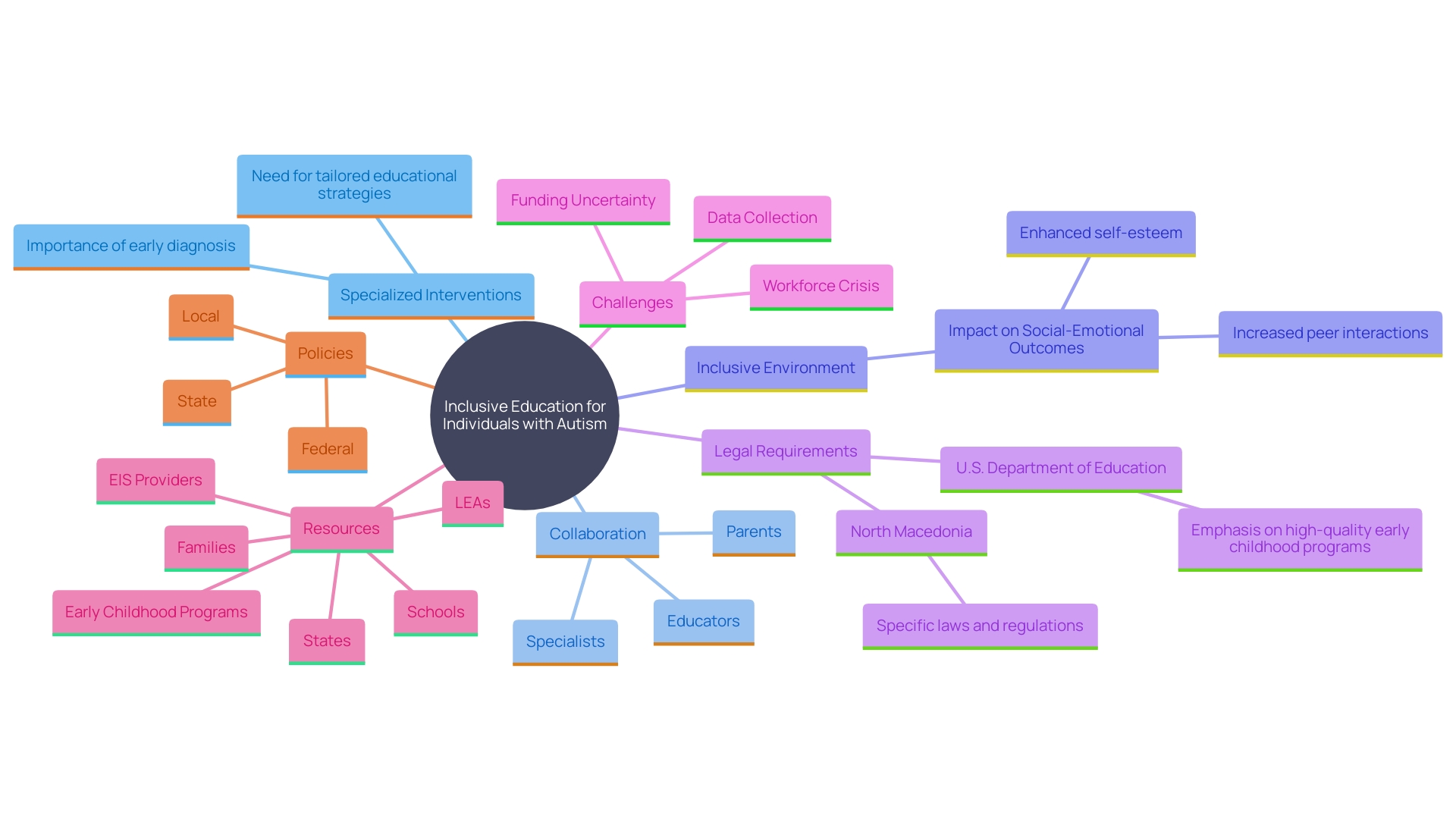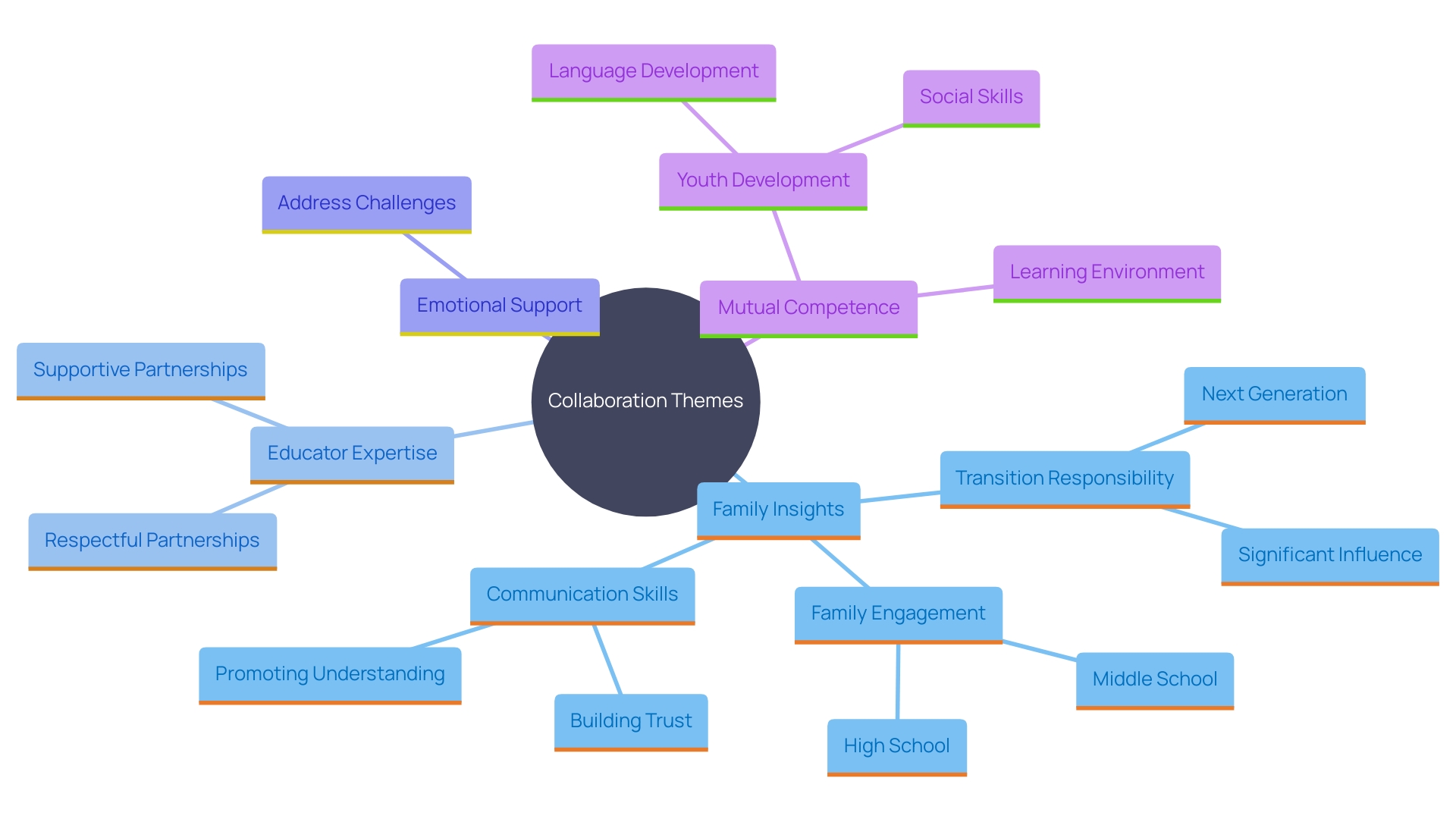Introduction
Navigating the complexities of Autism Spectrum Disorder (ASD) can be a daunting task for parents and educators alike. Understanding the unique challenges and strengths of children with ASD is crucial for providing the personalized care and support they need. This comprehensive guide explores essential strategies for creating nurturing environments that foster development and well-being.
From establishing structured routines to fostering positive peer interactions, each section offers practical advice backed by research and expert insights. By implementing these tailored approaches, caregivers and educators can significantly enhance social communication, reduce anxiety, and promote a sense of security and belonging for children with autism. Whether it's through professional development, community engagement, or inclusive education, this article aims to empower those dedicated to supporting children with ASD to build a brighter, more inclusive future.
Understanding Autism Spectrum Disorder
Autism Spectrum Disorder (ASD) presents a complex array of developmental challenges in social interaction, interaction with others, and behavior. Every individual with ASD is unique, necessitating personalized care approaches. Identifying early indicators and symptoms, such as interaction difficulties and repetitive behaviors, is essential for caregivers and educators. These customized approaches can greatly improve the child's interpersonal interactions and overall growth. According to recent studies, early childhood interventions, particularly naturalistic developmental behavioral interventions, have shown promising results in improving core challenges associated with the condition. These interventions not only bolster social communication skills but also contribute positively to long-term outcomes. Considering that roughly 1-4% of the population is impacted by this condition, it is essential for families and professionals to be knowledgeable about these effective techniques to support the development and well-being of individuals with ASD.

Creating Predictable and Structured Environments
Children with autism thrive in environments that are structured and predictable. According to experts like Judith Ursitti, establishing clear routines and consistent schedules is crucial for reducing anxiety and fostering a sense of security. Visual schedules and timers can serve as invaluable tools, providing children with a clear understanding of what to expect throughout the day. This approach not only helps them feel more in control but also enhances their engagement and participation.
Research highlights that developmental interventions, including naturalistic developmental behavioral interventions, significantly enhance interpersonal interactions with caregivers. These interventions address core challenges associated with autism, particularly difficulties with social communication. However, it's essential to balance these benefits against potential adverse effects due to inadequate monitoring and reporting.
David (Dan) R. Offord, a renowned psychiatrist specializing in youth, emphasized the importance of structured support in promoting mental health and equity for individuals with disabilities. He believed that recognizing both the unmet needs and assets of autistic youth is key to reducing chronic stress and ensuring caregivers have the necessary resources to support their offspring's healthy development. By implementing structured routines and using visual aids, caregivers can create a nurturing environment that promotes learning and development for individuals on the spectrum.

Fostering a Supportive Social Environment
Establishing a nurturing community atmosphere is vital for youngsters with developmental differences to acquire important interpersonal abilities and build significant relationships. Activities that promote collaboration, such as group projects and cooperative games, can significantly enhance peer relationships. Additionally, empowering staff and peers with training on inclusive interaction fosters a deeper understanding and acceptance, thus nurturing a more harmonious community.
A significant difficulty for young individuals with developmental differences is enhancing interpersonal interaction. 'Timely support initiatives, designed specifically for young individuals with communication difficulties, have shown to be successful.'. Dr. Hannah Schertz from Indiana University emphasizes the importance of early, developmentally appropriate interventions that directly address the core interpersonal difficulties associated with autism. These interventions not only assist the youth but also provide practitioners with the understanding to apply these strategies effectively.
Moreover, evidence shows that naturalistic developmental behavioral interventions can improve social communication significantly. This approach, which involves caregivers in the learning process, has been shown to enhance interactions and reduce stress within families. It's crucial to tackle these requirements promptly, as initial indicators of the condition appear, to enhance better long-term results for young individuals.
Inclusion and understanding in the community are pivotal. Initiatives like the Autism Welcoming Initiative train and certify businesses to be more accessible, making public spaces more comfortable for autistic individuals. This lessens the stress and sensory overwhelm frequently experienced by youngsters with developmental disorders, as emphasized by specialists such as Chris McDougle from the Lurie Center for Autism.
By establishing welcoming spaces and offering early, focused assistance, we can support young individuals with developmental differences to flourish socially and emotionally, ultimately nurturing a compassionate and empathetic community.
Encouraging Positive Peer Interactions
Encouraging constructive interactions among children, especially those with developmental differences, is vital for their interpersonal growth. Executing approaches like buddy systems, organized playdates, and skills groups can greatly improve significant connections. These methods not only aid in the enhancement of interpersonal abilities but also tackle fundamental issues related to the condition, like troubles in interactions with others. Caregivers play a crucial role by instructing youngsters in effective interaction methods and conflict resolution techniques, thereby empowering them to engage constructively with their peers. As stated by Dr. Hannah Schertz from Indiana University Bloomington, early support focused on interpersonal interactions is crucial as it directly tackles the main difficulties of the condition and establishes a basis for enhanced long-term results. Studies indicate that developmental strategies and naturalistic developmental behavioral approaches are effective in enhancing communication skills among youngsters with autism. By fostering an inclusive and supportive environment, caregivers can alleviate the social difficulties faced by these young individuals, ultimately contributing to their overall well-being and growth.
Building Inclusive Learning Environments
Developing inclusive educational settings is crucial to guarantee that all individuals, regardless of their abilities, have access to quality education. This is especially important for kids with autism, who often encounter unique challenges in conventional classroom environments. In North Macedonia, for example, autistic individuals are required by law to attend and learn in the same classrooms as their neurotypical peers. They have the right to request a class assistant for support, yet classrooms can still create obstacles due to sensory overload, which many individuals with autism experience.
Adjusting instructional approaches, resources, and evaluations to address varied requirements can greatly improve educational results for individuals on the spectrum. Evidence indicates that developmental interventions enhance social communication in engagements with caregivers and that naturalistic developmental behavioral interventions address fundamental challenges linked to the condition, especially issues with social communication. These interventions have shown significant positive effects on adaptive behavior, language, and social-emotional outcomes.
Collaboration among educators, parents, and specialists is key to developing effective strategies that promote inclusivity. For instance, the U.S. Department of Education emphasizes the importance of high-quality, evidence-based early childhood programs as a foundation for continued inclusion. Establishing high expectations for early inclusion opens opportunities for individuals with disabilities to achieve their objectives and succeed in school and their communities.
Participating in this joint endeavor assists in making sure that all young individuals, including those with developmental differences, feel appreciated and included in a community. This is not only crucial for their educational success but also for building their self-esteem and sense of belonging. By nurturing an inclusive and supportive environment, caregivers and educators can significantly enhance the well-being and development of individuals on the autism spectrum.

Strategies for Sensory-Friendly Classrooms
'Sensory sensitivities are common among youngsters with developmental disorders, making the establishment of sensory-friendly classrooms essential.'. Implementing strategies like designated quiet zones, sensory breaks, and the use of calming tools can significantly enhance the learning environment. Alison Neal, an advanced practitioner in sensory integration therapy, emphasizes the effectiveness of sensory movement breaks, which can be incorporated seamlessly into daily routines. Educators should be keenly aware of sensory triggers such as bright lights, loud noises, or strong smells and adjust the classroom layout and materials to minimize these distractions. According to Dr. Pooky Knightsmith, understanding sensory processing differences and their impact on behavior and learning is crucial for developing supportive educational settings. By customizing the classroom setting to meet sensory requirements, we can support young individuals with developmental disorders to excel both academically and socially.
Professional Development for Staff and Community Engagement
Continuous professional growth is crucial for educators and caregivers working with individuals on the spectrum to guarantee they possess the required skills and knowledge. Training programs that include comprehension of developmental disorders, effective behavior management, and inclusive practices are essential. These programs should not only involve teachers and paraeducators but also speech-language pathologists (SLPs) and district-level personnel who play significant roles in supporting these interventions. For instance, Michigan State University's Dr. Sarah Douglas has been creating the POWR System, an online training program for paraeducators and their supervising teachers, focused on enhancing interaction abilities for youth with complex needs.
Engaging the community through awareness programs is another vital component. By fostering an inclusive atmosphere, these programs can help bridge gaps in understanding and support. The Interagency Autism Coordinating Committee (IACC) exemplifies such efforts, working to enhance coordination and exchange across federal agencies and the autism community, involving diverse stakeholders such as autistic adults, family members, advocates, and researchers.
Additionally, studies emphasize the significance of early developmental interventions, which have been demonstrated to greatly enhance interpersonal interactions and adaptive behavior in autistic youth. For instance, developmental interventions have a notable impact on social communication, with naturalistic developmental behavioral interventions showing significant improvements in adaptive behavior and language skills. These findings emphasize the significance of carefully overseen and evidence-supported professional growth initiatives to enhance the advantages for individuals on the spectrum.

Accessible Learning Environments and Family Collaboration
Establishing robust collaborations between families and educational organizations is crucial to foster inclusive and supportive learning settings for young individuals with developmental differences. Such collaboration enables families to share valuable insights about their unique needs, while educators can provide tailored resources and support. This method is essential for tackling the particular issues encountered by youth with developmental disorders, such as communication limitations and interaction challenges.
Studies indicate that families of youngsters with developmental disorders frequently face considerable pressure owing to the substantial requirements of caregiving, financial worries, and concerns regarding their offspring's future. Effective collaboration can help alleviate some of this stress by providing families with the emotional support and information they need. Social support, including peer support and hope, plays a crucial role in improving family well-being and reducing collective stress.
Moreover, the evolving relationship between families and educational professionals highlights the importance of mutual competence. Families bring invaluable child-specific and community-specific knowledge, while educators offer subject matter expertise and mastery of educational systems. Embracing this mutual competence ensures that both parties are recognized and valued equally, fostering a more effective partnership.
Statistics indicate that joint engagement and shared activities between families and educators enhance the language development and social skills of young individuals. Information from multiple research efforts indicates that such teamwork is both achievable and beneficial, resulting in improved results for young individuals with developmental disorders.
In conclusion, by collaborating, families and educational institutions can foster a nurturing and inclusive setting that promotes the overall growth and development of individuals with autism. This collaboration not only advantages the young ones but also fortifies the whole family structure, fostering a sense of hope and resilience.

Benefits of Inclusive Education in Early Childhood
Inclusive education in early childhood environments encourages integration and acceptance among youth by promoting equity and respect for differences. When youngsters learn alongside peers with diverse abilities, they develop empathy and an appreciation for inclusivity. This nurturing environment is particularly beneficial for individuals with autism, as it supports their communication and social skills development, leading to improved academic success.
Studies reveal that 83% of parents do not have access to ASD-friendly support resources within their community, highlighting the importance of inclusive educational settings. Only 14% of parents confirmed their offspring’s teacher had completed Autism Awareness Training, which underscores the need for better-prepared educators. Inclusive environments also help combat bullying and ostracism, which many parents report as significant issues for their kids.
Assistant Secretary for the U.S. Department of Education’s Office of Special Education and Rehabilitative Services, Glenna Wright-Gallo, emphasizes that “inclusion in high-quality, evidence-based early childhood programs sets the stage for continued inclusion through school years and beyond.” By creating shared experiences among young people of all abilities, as advocated by Special Olympics, we can foster a more inclusive mindset that celebrates differences and encourages acceptance.
The overall development of individuals with autism is further enhanced by inclusive environments, as they facilitate personalized education that meets each person's unique learning needs. This approach not only enhances social skills but also boosts self-esteem and a sense of belonging, helping all children feel valued and part of a community.
Conclusion
Creating an inclusive and supportive environment for children with Autism Spectrum Disorder (ASD) is essential for their growth and development. The article has highlighted the importance of personalized strategies tailored to each child's unique needs, emphasizing early intervention as a key factor in improving social communication and overall well-being. Understanding the complexities of ASD, from sensory sensitivities to social challenges, allows caregivers and educators to implement effective approaches that foster a sense of security and belonging.
Structured routines and predictable environments play a vital role in reducing anxiety and enhancing engagement. By utilizing tools such as visual schedules and sensory-friendly classroom designs, caregivers can create nurturing spaces that cater to the specific needs of children with autism. Moreover, fostering positive peer interactions through collaborative activities and training for staff and peers promotes inclusivity and understanding within the community.
The significance of family collaboration cannot be overstated. Building strong partnerships between families and educational institutions ensures that the unique insights of parents are valued, ultimately leading to better outcomes for children. Inclusive education not only benefits children with autism but also cultivates empathy and respect among all students, fostering a more accepting society.
By embracing these strategies, caregivers and educators can empower children with autism to thrive socially and academically, paving the way for a brighter, more inclusive future. The commitment to understanding and addressing the needs of children with ASD will not only enhance their quality of life but also enrich the communities they inhabit.




